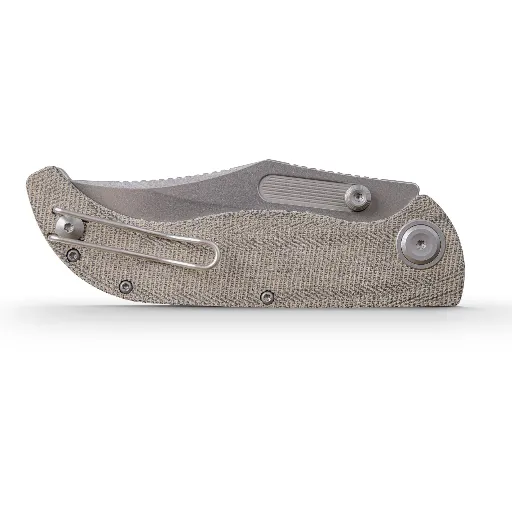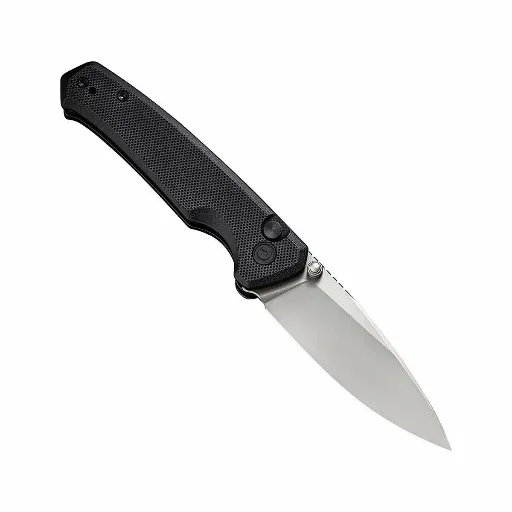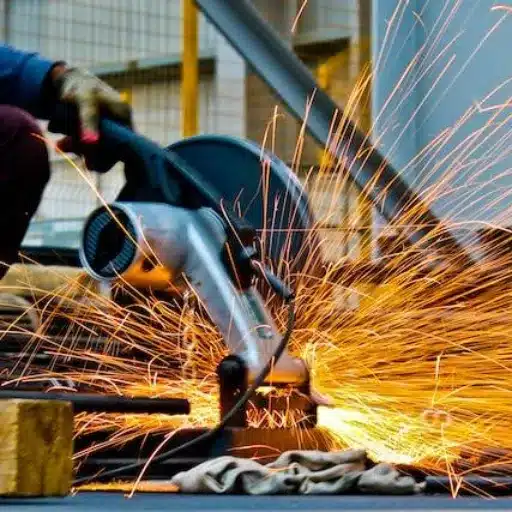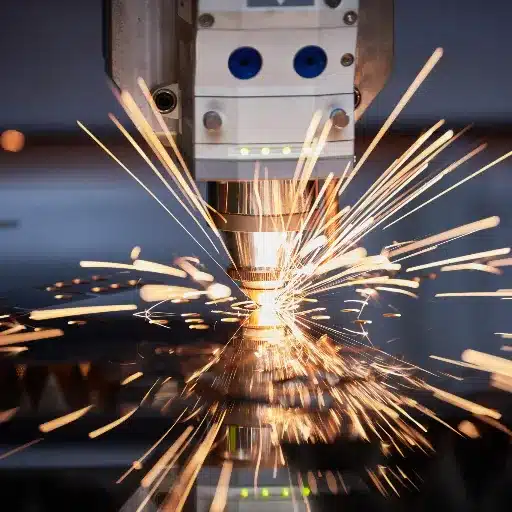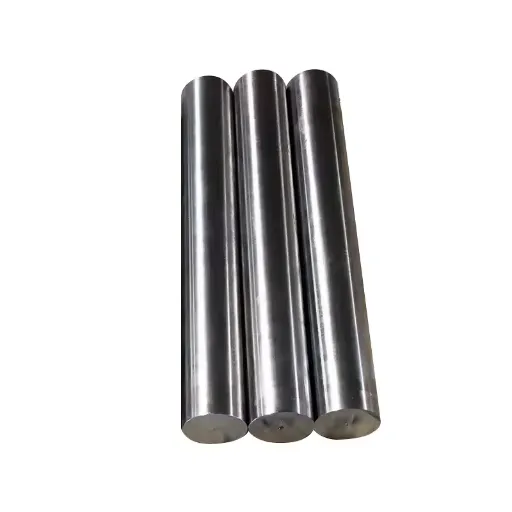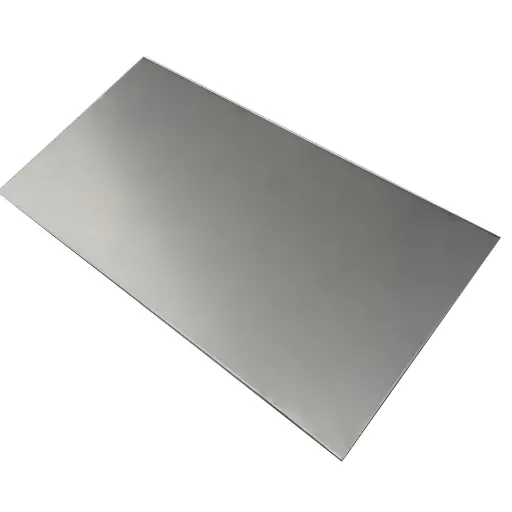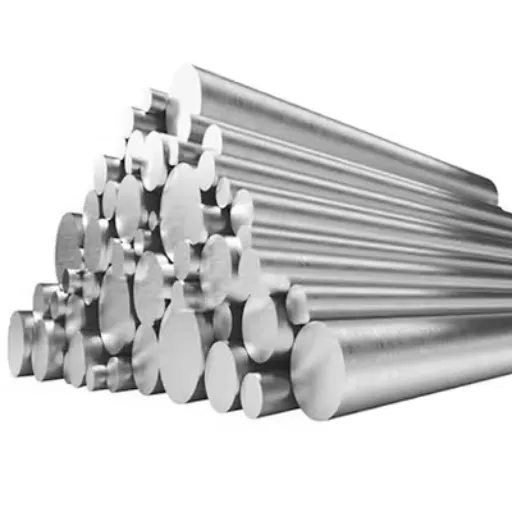Selecting the proper knife steel is a matter of prioritizing performance, durability, and purpose. The knife community often debates two popular choices—Nitro-V and S35VN—amongst enthusiasts and professionals. Which one maintains an edge longer? Which one is superior in toughness when subjected to stress? This article explores the minutiae of the two luxury steels, analyzing their pros and cons for the purpose of making a clear choice for you. No matter if you are a collector, a person who loves outdoor activities, or a professional requiring trustworthy tools, this comparison will walk you through the essential considerations when choosing between Nitro-V and S35VN.
Introduction to Knife Steel Selection
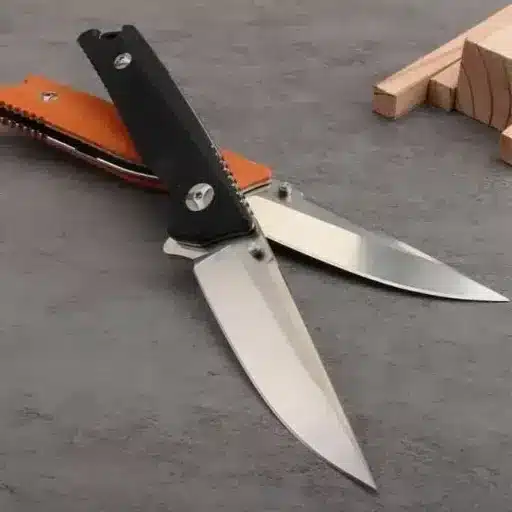
The Choice of Material in Knife Production is Essential
The material choice, being one of the most critical ones, is the main factor that determines a knife’s performance, durability, and usefulness. The latest knife steels Nitro-V and S35VN are the product of metallurgical processes, representing the future in the field, and covering the current demands for metals – from good resistance to corrosion to great retention of the edge. Getting the right steel can totally turn a knife’s performance in terms of keeping its sharpness, being able to take heavy usage, and standing tough against bad weather.
One of the instances can be cited is Nitro-V, the nitrogen-infused stainless steel that has the best rust-resistance and toughness properties. The mixture has vanadium and nitrogen in it which gives it high wear-resistance but at the same time does not work against the sharpening process. The knives made with Nitro-V can be used in places where humidity and water exposure are high, so they will serve well in outdoor and marine activities.
Edge Retention and Toughness: an Overview
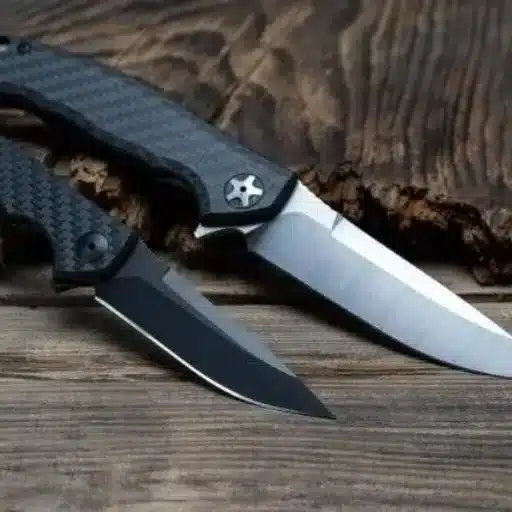
Edge Retention
Edge retention, which is a significant aspect of knife characteristics, is influenced by the blade’s hardness (measured in Rockwell Hardness Scale, HRC), the type of steel alloy used, and heat treatment. HRC=58-60 or even more for example. The edge retention property of the high-carbon steels like CPM-S90V and ZDP-189 is due to their high carbide volume, which is a plus but during sharpening the process can become tedious. A recent research has shown that CPM-S90V has been able to keep pace with major steel competitors in edge retention ability. Under controlled cutting scenarios, it was able to retain an edge tolerance of approx. 50% longer than the most standard steels.
Toughness
Toughness, in contrast, is important for the blades that are subjected to high lateral forces and impacts. Developed for this situation, steels like CPM-3V and AEB-L are the ones that take the hardest blows without showing break or chip signs. The strength and toughness of these steels have been empirically established, e.g., the testing records show that CPM-3V can bear the lateral stress of 10 times that of harder and more brittle steels like VG-10. This is the reason why it is used in making camping or survival knives, etc.
Finding the Right Mix
Manufacturers frequently cooperate closely with the target market in tailoring steel compositions and blade designs. In that connection, the outdoor plasticity in steel may be about 5160, while the cooking art would demand the sharpness of VG-10 or SG2. Also, the industry has been propped up by the discovery of new methods such as powder metallurgy or differential heat treatment, creating steel that would more likely possess equal shares of edge retention and toughness.
Nitro-V Steel: Composition and Properties
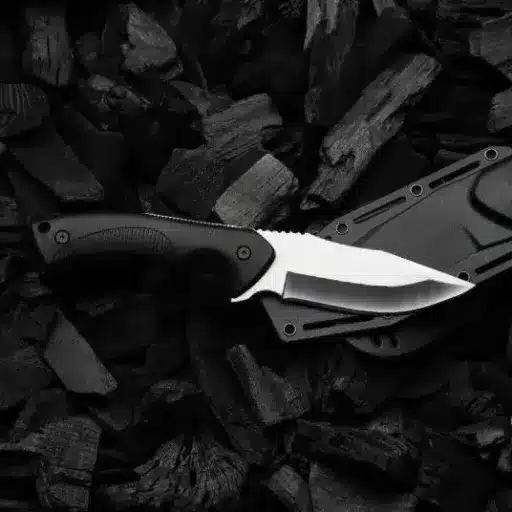
The Details of Nitro-V Steel Chemical Composition
Nitro-V is a pure steel which has undergone the martensitic process, and therefore, it has the ability of rough and tough just at the perfect point of corrosion resistance, durability, and edge retention. It is an improvement of the well-known AEB-L steel, Nitro-V, which has the addition of nitrogen and vanadium that results in better properties. Below is its standard chemical make-up:
| Element | Percentage | Function |
|---|---|---|
| Carbon (C) | 0.68% – 0.72% | Main factor in hardness and edge retention; guarantees fine grain structure and properties of strength and toughness |
| Chromium (Cr) | 12.0% – 13.0% | Major role in resistance to corrosion and keeping steel sharp longer; classifies as stainless steel |
| Vanadium (V) | 0.10% – 0.15% | Raises resistance to wear; creates vanadium carbides for higher edge stability and toughness |
| Nitrogen (N) | 0.08% – 0.11% | Strengthens steel matrix; provides resistance to pitting; enhances durability in extreme conditions |
| Manganese (Mn) | 0.35% – 0.45% | Works with heat treatment by making steel hard; increases overall strength |
| Silicon (Si) | 0.35% – 0.45% | Essential for strength increase; assists during deoxidation process in steel production |
| Phosphorus (P) and Sulfur (S) | ≤ 0.03% each | Limited to very low levels to prevent influence on toughness and brittleness resistance |
S35VN Steel: Composition and Properties
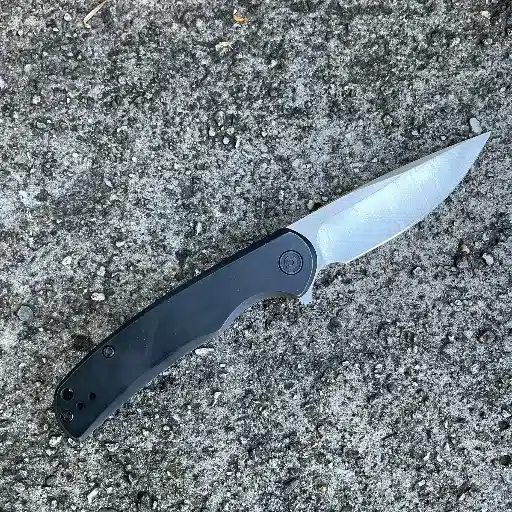
Chemical Composition of S35VN Steel
S35VN steel is an excellent stainless steel characterized by a good combination of toughness, edge retention, and corrosion resistance. It was created by the Crucible Industries as a successor to the already famous S30V steel, adding niobium for better properties. The chemical components of S35VN steel are listed below:
| Element | Percentage | Function |
|---|---|---|
| Carbon (C) | 1.40% | Gives hardness, strength, and edge retention |
| Chromium (Cr) | 14.00% | Implies perfect corrosion resistance and plays a role in wearing out less |
| Vanadium (V) | 3.00% | Counteracts wear, increases toughness and participation in grain size refining |
| Molybdenum (Mo) | 2.00% | Boosts strength at high temperatures and provides resistance against corrosion |
| Niobium (Nb) | 0.50% | Enhances microstructure and gives utmost strength while S30V steel is compared to S30V steel |
Performance Characteristics of S35VN
The S35VN steel is a jack-of-all-trades with a harmonious performance throughout major categories, thus it is a premium choice for both industrial and knife-making applications, however, the characteristics of S35VN come out as below in detail:
- Edge Retention: Vanadium carbides having a high percentage of around (3%) make S35VN superb when it comes to edge retention which is the reason why it is preferred for cutting tools that need to be sharp for a long time.
- Corrosion Resistance: With a considerable amount of chromium that is around 14%, S35VN gets a powerful shield against corrosion and rust attack even when the environment is very harsh. This property is particularly an advantage for the outdoor knives that are constantly in contact with moisture and humidity as it becomes a non-issue for the knife users.
- Toughness: The alloying of niobium with the main components of the steel does modify the toughness to a great extent by introducing a factor that reduces the occurrence of chipping or cracking even under heavy use. Thus, S35VN steel’s performance in tough conditions is better compared to steels like S30V.
- Wear Resistance: The presence of an equal proportion of carbon, vanadium as well as niobium carbides secures a very high level of wear resistance. S35VN steel offers continuous slicing for a long time before the need for sharpening arises thereby resulting in less interrupted usage.
- Hardness: Depending on the heat treatment S35VN steel gets a Rockwell Hardness (HRC) of about 58-61. The mentioned hardness is conferring a cutting-edge balance between the durability of the steel and the easiness of sharpening.
Comparative Analysis: Nitro-V vs S35VN
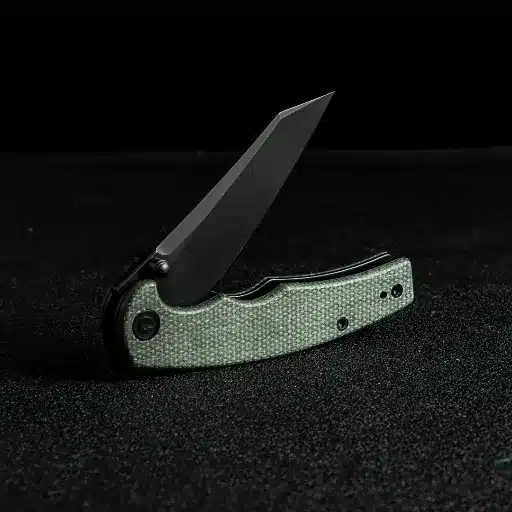
Edge Retention Comparison
S35VN Advantage: Nitro-V and S35VN exhibit remarkable differences regarding the edge retention comparisons due to their compositions and intended applications. S35VN, being a high-performance stainless steel, has a perfect blend of both vanadium and niobium carbides which accounts for its excellent edge holding capacity. It is explicitly constructed to take the sharp edge for a long period, thus, it can be used for cutting-intensive activities like survival or military tasks. Independent tests and anecdotal evidence have been giving S35VN a long-term edge retention over Nitro-V consistently.
Nitro-V Characteristics: On the contrary, Nitro-V has been made with nitrogen and chromium that enhance the retention but only to a minor extent when compared to S35VN. Nitro-V is quite good at first in attaining a very sharp edge, thus, facilitating the users that tend to prioritize sharpening convenience and perform tasks that require a very fine edge but in exchange for more frequent maintenance.
Ease of Sharpening: Nitro-V vs S35VN
In the case of Nitro-V and S35VN, sharpening ease is a factor where Nitro-V comes out on top. Nitro-V carbide volume is slightly less, and its microstructure is more straightforward, hence, it offers less resistance to the sharpening tools. This makes it a friendly option for users who prefer or have to maintain their knives regularly. Nitro-V can be effectively sharpened using very basic systems or even handheld stones, thus requiring less time and effort in comparison to its counterpart.
On the flip side, S35VN, because of its higher content of vanadium and niobium carbides, is more resistant to abrasion. While this is one of the factors contributing to its being superior in edge retention, it also makes sharpening a much harder and time-consuming process. Users might have to invest in diamond-tipped sharpening tools or high-tech systems to carry out the fine-tuning of an S35VN blade’s edge efficiently, which may be a consideration for those lacking easy access to such resources.
| Feature | Nitro-V | S35VN |
|---|---|---|
| Edge Retention | Good initial sharpness, requires more frequent maintenance | Superior long-term edge retention |
| Ease of Sharpening | Easier – can use basic systems or handheld stones | More difficult – requires diamond-tipped tools or high-tech systems |
| Carbide Structure | Lower carbide volume, simpler microstructure | Higher vanadium and niobium carbides, more resistant to abrasion |
| Best Use Case | Users who prefer regular maintenance and need fine edges | Cutting-intensive activities, survival, military tasks |
Expert Opinions and Insights
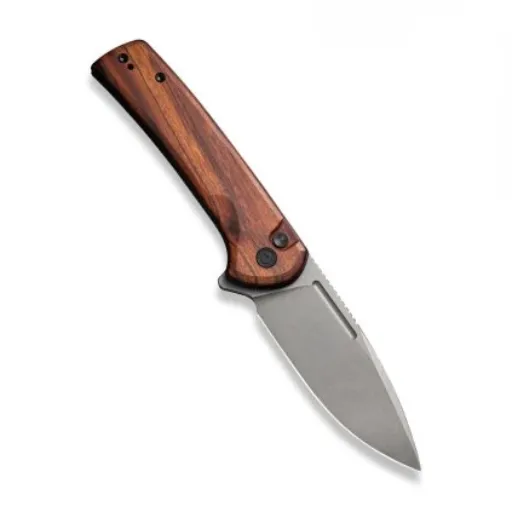
Practical Recommendations for Knife Makers
When deciding on the choice between S35VN and Nitro-V for knife-making, it is essential to examine the target group and the knives’ purpose. S35VN is very popular because of its great edge retention, toughness, and resistance to corrosion, thus making it a perfect choice for high-performance blades. This steel is perfect for knives that are going to be used in heavy-duty tasks, outdoor survival, or professional use where durability and longevity matter most. Nevertheless, it is more expensive and this might limit its adoption in projects that are more sensitive to budget constraints.
On the other hand, Nitro-V offers a more economical option which does not compromise on the main features like toughness and stain resistance. Its fine grain structure also facilitates quick sharpening and good edge holding, thus making it especially attractive for the production of kitchen knives, EDC (everyday carry) knives, and other mid-range tools. Additionally, Nitro-V’s exceptional toughness means that it can be used for thinner blades which require flexibility and precision cutting.
Key Recommendations Summary:
- Choose S35VN for: Heavy-duty tasks, outdoor survival, professional use, premium applications
- Choose Nitro-V for: Kitchen knives, EDC knives, mid-range tools, budget-conscious projects, thinner blades
Making informed decisions on the steel choice
It is very critical to consider performance, cost, and the specific use case of the steel being chosen for knives. The modern technology in metallurgy has created new steel types that can meet various needs ranging from high-end outdoor tools to inexpensive kitchenware. By studying the features of knives like corrosion resistivity, edge retention, toughening, and sharpening, the manufacturers can get closer to the expectations of the customers regarding the materials.
The steel, for example, CPM-S35VN which is a top-notch material is known for its superb edge retention and rust resistance. The knife made up of this steel is suitable for premium heavy-duty use. Recent reports say that CPM-S35VN has a Rockwell Hardness (HRC) of about 58-61 which categorizes it among the harder steels but still offers a good toughness. However, the price per pound can go from $50- $60 which makes it more of a premium product.
Reference Sources
-
Keganico
- Title: “Nitro-V vs S35VN: The Ultimate Steel Comparison”
- URL: https://keganico.com/nitro-v-vs-s35vn/
- Why Reliable: This article highlights the strengths and weaknesses of both steels, making it a valuable resource for understanding their applications and performance.
-
Keganico
- Title: “Nitro V Steel Guide: Composition, Performance & …”
- URL: https://keganico.com/nitro-v-steel/
- Why Reliable: This guide dives into the composition and performance of Nitro-V steel, offering insights into its toughness, affordability, and corrosion resistance.
Frequently Asked Questions (FAQs)
How Does Nitro-V Steel Compare to D2 Steel?
Nitro-v steel comes with a few pros over D2 steel, particularly in the corrosion resistance department. While D2 is a high-carbon tool steel that can be prone to rust, Nitro-v is purposely designed to be drier and thus it is a good choice for a knife that should withstand extra harsh indoor/outdoor conditions. Besides, Nitro-v is much more user-friendly as it does not pose much difficulty while sharpening, unlike D2.
Is Nitro-V Steel Easier to Sharpen Than S35VN?
Indeed, Steele Nitro-v is widely recognized as an easier steel to sharpen than S35VN. The fine carbide structure of Nitro-v makes it a less complicated sharpening process; this is the reason why it is popular among users who might not have very sophisticated sharpening skills. While S35VN affords extremely long-lasting edges, it could be more difficult to sharpen because of its hard nature as well as the presence of vanadium carbides.
What Is the Edge Retention of Nitro-V Steel?
Nitro-v steel performs remarkably well in terms of edge retention and often ranks the highest among the stainless steels in its category. When properly heat treated, Nitro-v can hold an edge longer than many budget steels. This characteristic makes it suitable for custom knives that require both sharpness and longevity, ensuring that users can rely on their knives for extended periods without frequent sharpening.
How Does the Heat Treatment Affect the Performance of Nitro-V Steel?
Heat treatment is very important part that enhances the performance of Nitro-v steel. Proper heat treatment and edge geometry can greatly improve edge retention and overall toughness. By optimizing the heat treatment process, knife manufacturers can create blades that not only maintain a high edge but also withstand more demanding tasks without chipping or losing their sharpness.

